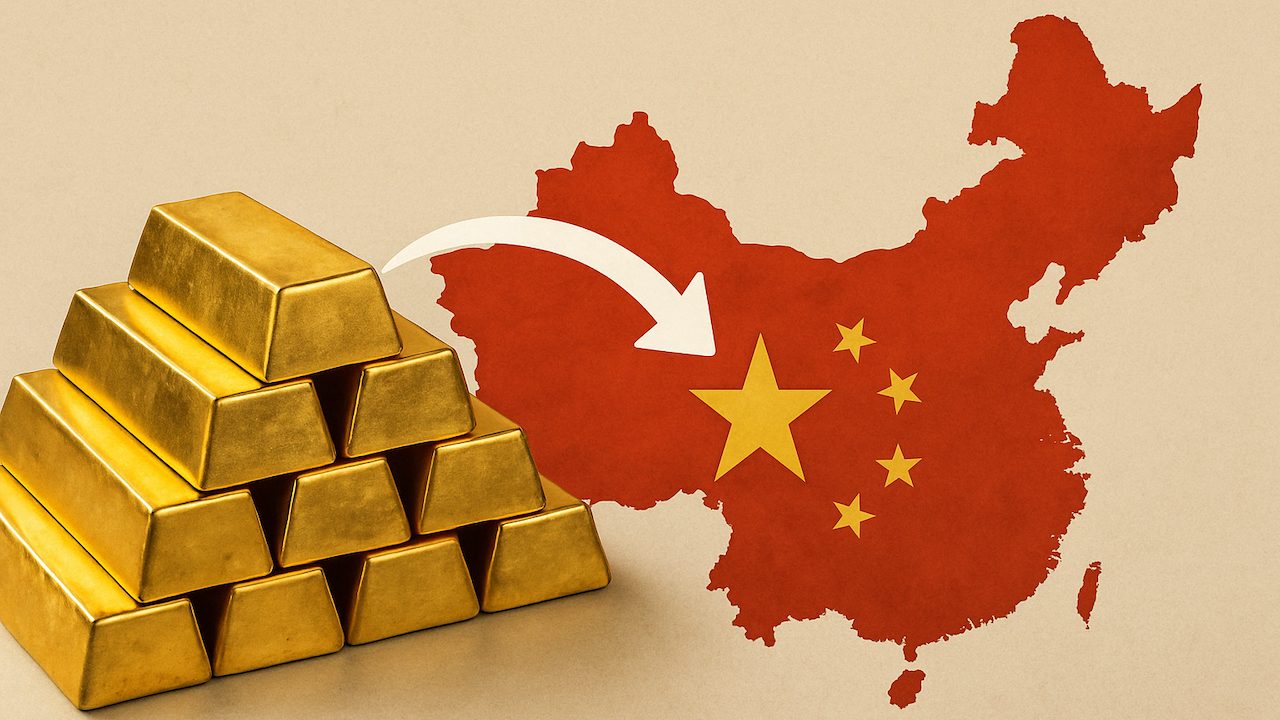(Mike Maharrey, Money Metals News Service) Demand for gold is so strong in China that the government has allocated additional gold import quotas for commercial banks.
According to a Bloomberg article, strong haven demand from institutional and retail investors led to the move.
China ranks as the world’s largest gold market.
The government uses import quotas to limit the amount of gold flowing into the country. According to unnamed sources in China, the government upped the quotas last week to satisfy the significantly increased appetite for bullion. Officials say commercial banks requested the additional quotas.
The Bloomberg article notes that the gold price has doubled in yuan terms since 2022.
“Trade tensions have only heightened appetite for bullion, which has repeatedly touched records over the last few months.”
The surge in demand is reflected in a significant inflow of gold into Chinese gold-backed ETFs.
There has also been a boost in Chinese gold demand in response to a pilot program that allows insurance funds to invest in gold.
State Street Global Advisors’ strategist Aron Chan described it as a “multi-layered demand base,” noting that it helps support and stabilize the price even in the midst of extreme volatility.
“This demand is less speculative and more strategic or culturally embedded, which means it is stickier and more resilient.”
Another Bloomberg article described it as “a gold-trading frenzy.”
A Chinese analyst with Jinrui Futures told Bloomberg that Chinese investors favor gold as a safe-haven asset and a long-term portfolio diversifier, especially when equities and bonds come under pressure.
“I expect investment and hedging demand in China to remain resilient as policy flip-flops in the U.S. create more uncertainty.”
Another analyst said ongoing de-dollarization is also driving gold investment. This could accelerate if the trade war continues to heat up.
“China may be encouraged to continue moving forward more actively to diversify its reserves away from the U.S. dollar and treasuries given that it is at the epicenter of the trade war. The desire to reduce exposure to the US may see China buying more gold to bolster its reserve.”
Money Metals analyst Jesse Colombo points out that Chinese demand has been a big part of this gold rally from the beginning.
“Since last fall, I’ve been advancing a theory that China’s aggressive futures traders—who were behind gold’s initial $400 breakout one year ago that launched this bull market—would soon reassert themselves and help drive gold from around $2,500 to $3,000 and beyond.
“Sure enough, I’m pleased to report that my thesis is unfolding exactly as anticipated—evidenced by a surge in gold futures trading volume on the Shanghai Futures Exchange (SHFE), a renewed rise in Chinese domestic gold premiums over international spot prices, and gold now entering its parabolic, nearly vertical phase.”
There is no reason to think Chinese demand is going to slow down any time soon and that means the gold bull likely has plenty of legs left.
Mike Maharrey is a journalist and market analyst for Money Metals with over a decade of experience in precious metals. He holds a BS in accounting from the University of Kentucky and a BA in journalism from the University of South Florida.

